For the potentiometer circuit shown in the given figure, points X and Y represent the two terminals of an unknown emf ε . A student observed that when the jockey is moved from the end A to the end B of the potentiometer wire, the direction of the deflection in the galvanometer remains in the same direction. What may be the two possible faults in the circuit that could result in this observations ? If the galvanometer deflection at the end B is (i) more, (ii) less, than that at the end A which of the two faults," listed above, would be there in the circuit ? Give reasons in support of your answer in each case.
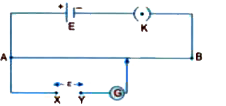
Two possible faults in the circuit can be :
1. Positive terminal of unknown emf source e is not connected to point A, where positive terminal of battery E has been connected.
2. Emf of battery E is less than the unknown emf ε .
(i) If on sliding the jockey from the end A to end B galvanometer deflection gradually increases then it means that connections of unknown emf ε are wrong because then in accordance with Kirchhoff.s laws potential is gradually increasing from A to B.
(ii) If on sliding the jockey from the end A to end B galvanometer deflection decreases but null point is not obtained then it means that the emf of battery E is less than unknown emf ε and hence deflection is in one direction only.
Topper's Solved these Questions
- CURRENT ELECTRICITY BOOK - U-LIKE SERIESCHAPTER - CURRENT ELECTRICITY EXERCISE - LONG ANSWER QUESTIONS - II
8 Videos
- CURRENT ELECTRICITY BOOK - U-LIKE SERIESCHAPTER - CURRENT ELECTRICITY EXERCISE - SELF ASSESSMENT TEST (SECTION A (MULTIPLE CHOICE QUESTIONS))
6 Videos
- CURRENT ELECTRICITY BOOK - U-LIKE SERIESCHAPTER - CURRENT ELECTRICITY EXERCISE - SHORT ANSWER QUESTIONS
42 Videos
- CBSE SAMPLE QUESTION PAPER 2019-20 (SOLVED)BOOK - U-LIKE SERIESCHAPTER - CBSE SAMPLE QUESTION PAPER 2019-20 (SOLVED)EXERCISE - SECTION D
6 Videos
- DUAL NATURE OF RADIATION AND MATTERBOOK - U-LIKE SERIESCHAPTER - DUAL NATURE OF RADIATION AND MATTEREXERCISE - SELF ASSESSMENT TEST SECTION-C (VERY SHORT ANSWER QUESTIONS)
3 Videos
Similar Questions
(i) Define the term drift velocity.
(ii) On the basis of electron drift, derive an expression for resistivity of a conductor in terms of number density of free electron and relaxation time. On what factors does resistivity of a conductor depend ?
(iii) Why alloys like constantan and manganin are used for making standard resistors ?
View SolutionWhen a piece of aluminium wire of finite length is drawn through a series of dies to reduce its diameter to half its value, its resistance will become
View SolutionDraw V-I graph for ohmic and non-ohmic materials. Give one example for each.
View Solution(a) Using Gauss's law, derive expression for intensity of electric field at any point near the infinitely long straight uniformly charged wire.
(b) The electric field components in the following figure are Ex=αx,Ey=0,Ez=0, in which α=400N/Cm. Calculate (i) the electric flux through the cube, and (ii) the charge within the cube assume that a=0.1m.

View SolutionDefine the term 'work function' of a metal. The threshold frequency of a metal is f0. When the light of frequency 2f0 is incident on the metal plane, the maximum velocity of electrons is v1. When the frequency of the incident is increased to 5f0, the maximum velocity of electrons emitted is v2. find the ratio of v1 to v2.
View SolutionConsider the potentiometer circuit arranged as in figure.The petentiometer wire is 600cm long.(a) At wht distance from the point A should the jockey touch the wire to get zero deflection in the galvanometer?(b) If the jockey touches the wire at a distance of 560cm from A, What will be the current in the galvanometer?
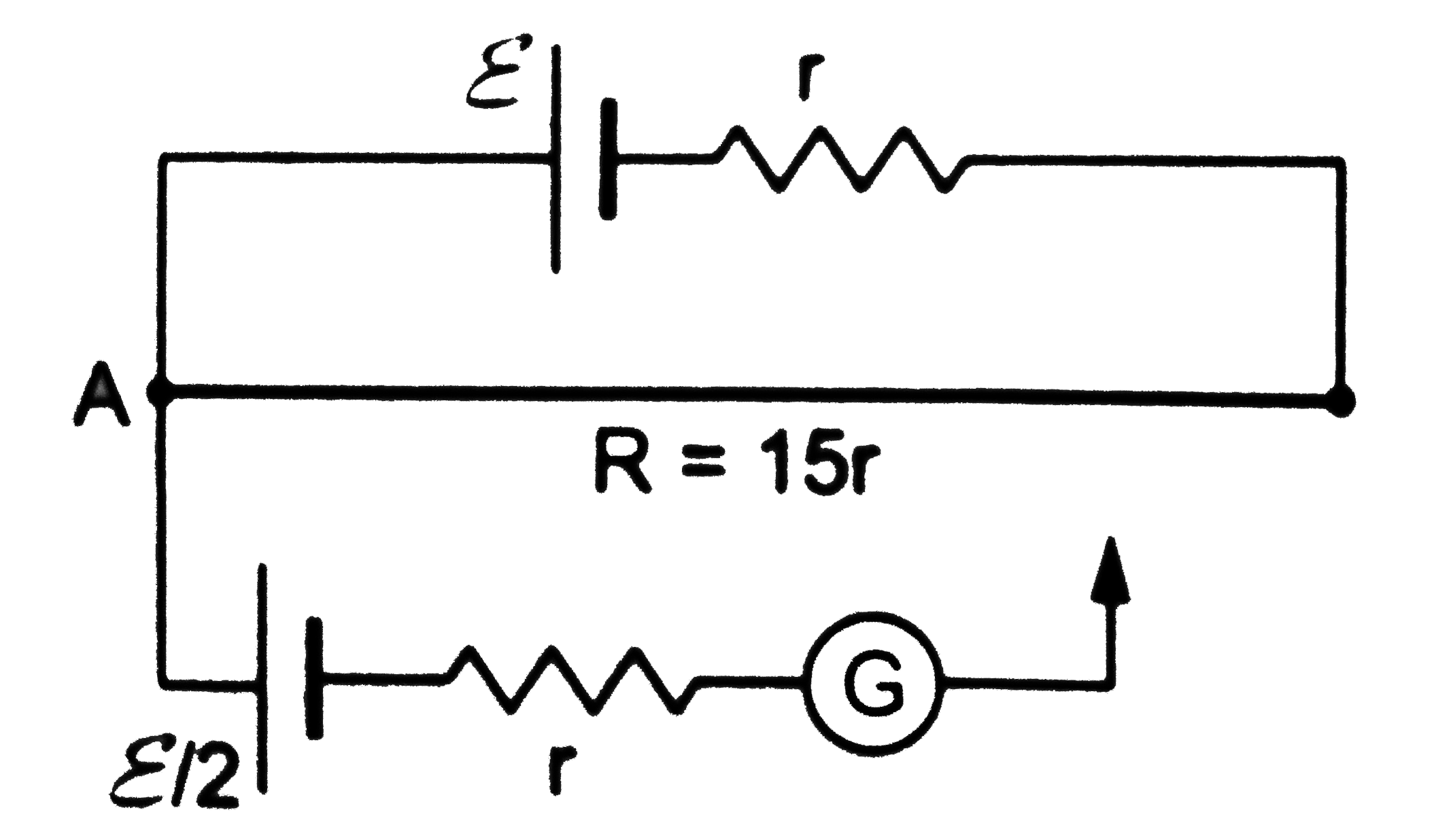
View SolutionIn the following circuit, resistance of potentiometer wire is 100 Omega . Power consumption in potentiometer wire is same when jockey is placed at 10 cm from end A or end B. Internal resistance of cell (r ) is
View SolutionA potentiometer circuit shown in the figure is set up to measure e.m.f. of a cell E . As the point P moves from X to Y the galvanometer G shows deflection always in one direction, but the deflection decreases continuously until Y is reached. In order to obtain balance point between X and Y it is necessary to
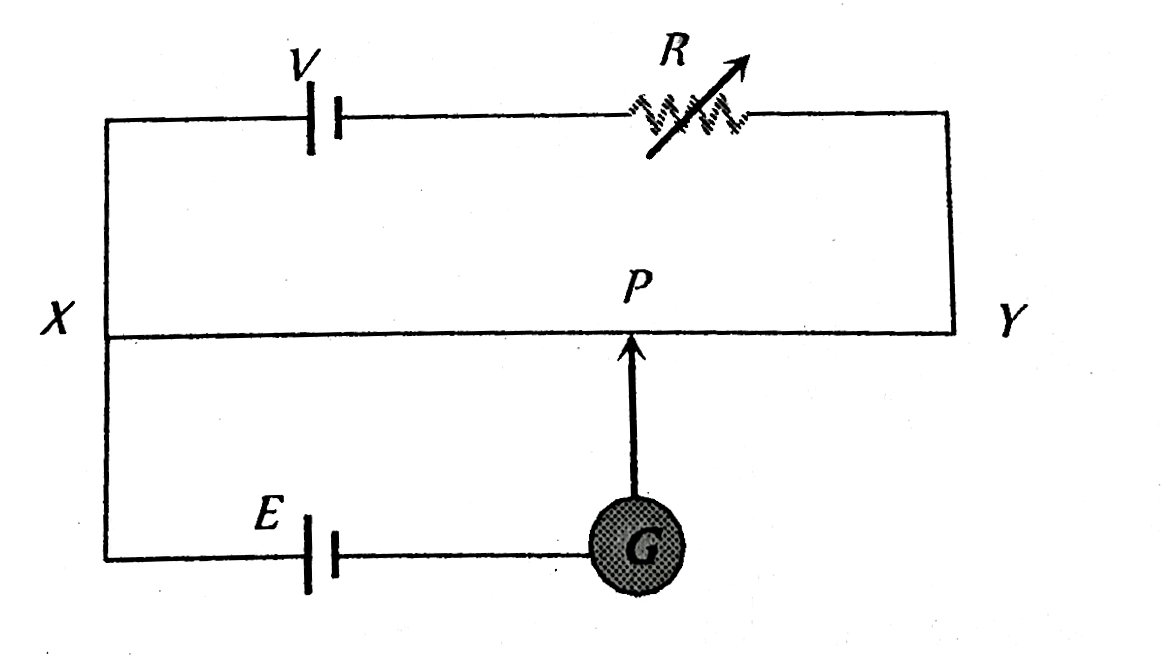
View SolutionIn the following diagram the deflection in the galvanometer in a potentiometer circuit is zero. Then:-
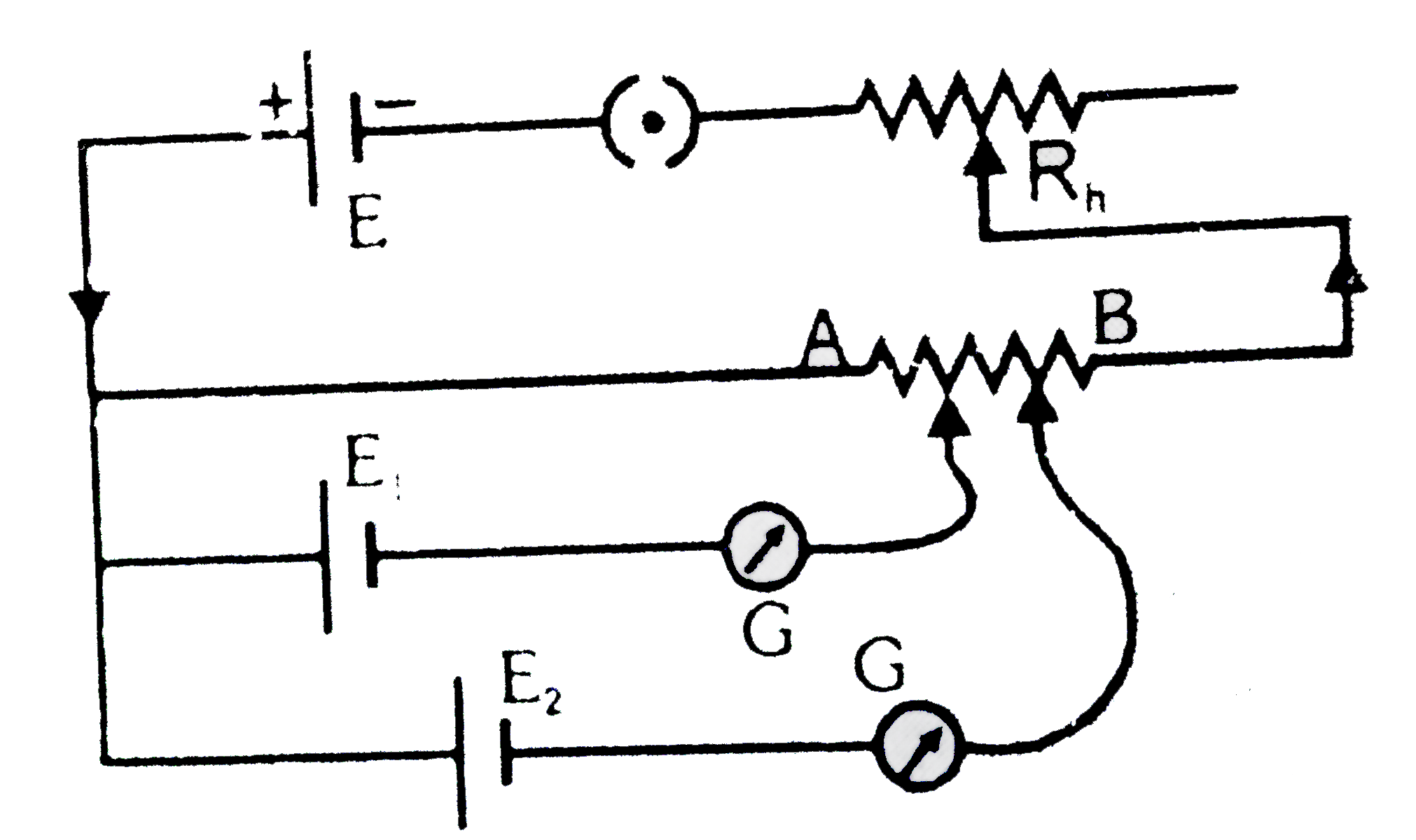
View SolutionVolymeter can not be used to measure emf to a cell potentiometer can be used to measure emf of a cell because
View SolutionWhat is the potential difference between the ends A and B of the given potentiometer wire, in the following circuit ? The galvanometer G shows no deflection.
View Solutionविभवमापी के प्रयोग में एक ही दिशा में विक्षेप होने के दो संभावित कारणों को लिखिए।
विभवमापी के तार के लिए किस पदार्थ का उपयोग किया जाता है और क्यों?
View Solutionएक विभवमापी के परिपथ में बिंदु X और Y अज्ञात वि. वा. बल ε' वाले सेल के दो टर्मिनलो को प्रदर्शित करते है। एक विद्यार्थी देखता है कि जब जॉकी को विभवमापी के तार के अनुदिश A से B की ओर ले जाया जाता है तो धारामापी में विक्षेप एक ही दिशा में रहता है। परिपथ में दो संभावित त्रुटियाँ क्या हो सकती हैं जो इस प्रेक्षण को प्रभावित कर सकता है?
View SolutionIn the potentiometer circuit shown in the figure the internal resistance of the 6V battery is 1Ω and length of the wire AB is 100 cm . When AD = 60 cm , the galvanometer shows no deflection . The EMF of the cell C is (the resistance of the wire AB is 2Ω )
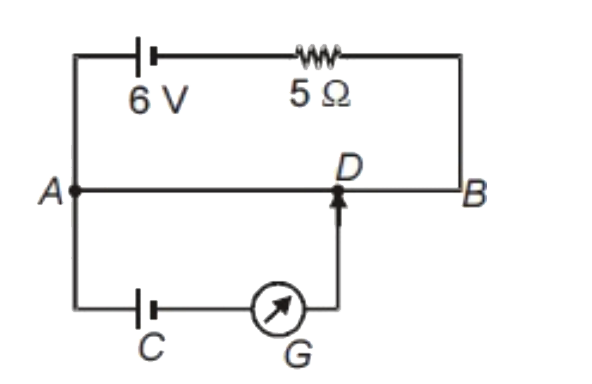
View SolutionPoints X and Y unknown electric carrying force for the potentiometer circuit shown in Figure 6.32 epsi Shows two ends of. One student noticed that when the key is moved from the end of the potentiometer wire from the end of A to the head B, the deflection in the galvanometer stays in the same direction. What are two possible errors in the circuit that led to this? If the galvanometer deflection at end B is (i) greater and (ii) less than the deflection at end A, which of the two buttons above will be in the circuit? Under any circumstances, give reasons in favor of your Figure 6.32 answer.
View Solution
